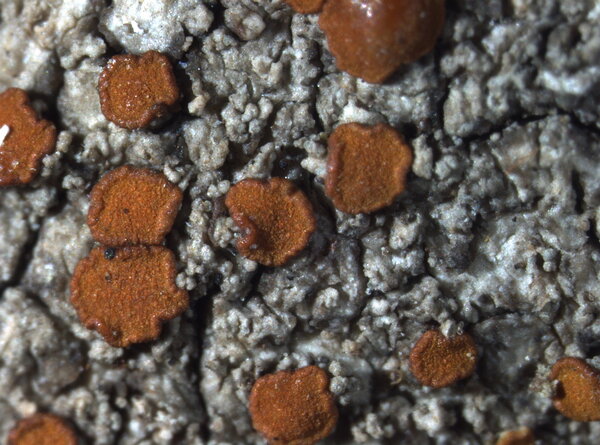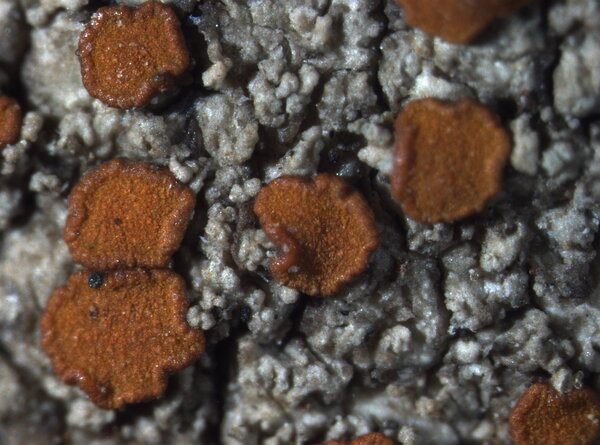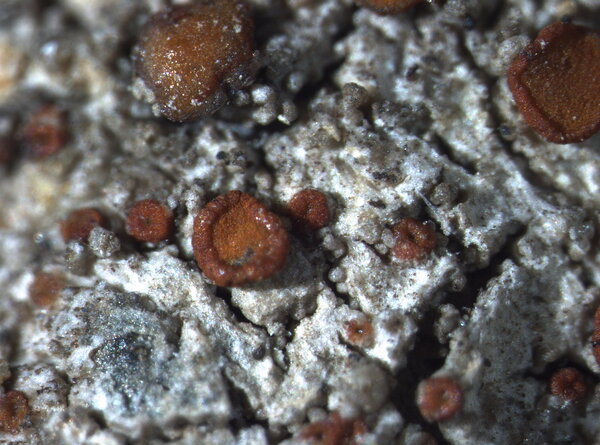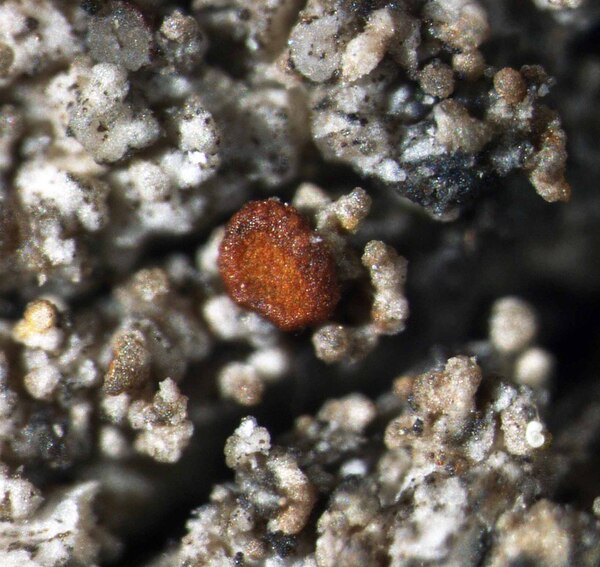Blastenia monticola Arup & Vondrák
in Vondrák & al., J. Syst. Evol. 58, 3: 320, 2019.
Synonyms: Caloplaca herbidella auct. ital. p.p.
Distribution: N - Frl (Vondrák & al. 2020), Ven (Ravera & al. 2021), TAA (Ravera & al. 2021), Lomb (Ravera & al. 2021), Piem (Nascimbene & al. 2021).
Description: Thallus crustose, episubstratic, grey or rarely pale yellow, usually up to 100 μm thick (but appearing up to 300 μm thick when densely blastidiate/isidiate). Blastidia/isidia granular, 50-200 μm. Apothecia biatorine/zeorine, red, 0.8-1.2 mm across. Proper exciple prosoplectenchymatous, K+ red, C+ red; epithecium orange-brown, granular, K+ red, C-; hymenium colourless, not inspersed with oil droplets; paraphyses simple or sparingly branched and anastomosing, 1.5-3 μm thick in lower part, the apical cells usually wider; hypothecium colourless. Asci 8-spored, clavate, functionally unitunicate, apically thickened with a broad internal beak, the inner part of apex and external cap I+ blue, Teloschistes-type. Ascospores 2-celled, polarilocular, hyaline, ellipsoid, (8-)9.5-15(-17) μm x 6-8 µm, the equatorial thickening (“septum”) c. 5 µm. Pycnidia red. Conidia bacilliform, rarely narrowly ellipsoid, 3-5 x 1-1.5 μm. Photobiont chlorococcoid. Spot tests: thallus K-, C-, KC-, P-; apothecia K+ red, the exciple also C+ red. Chemistry: non-chlorinated anthraquinones in apothecial disc, chlorinated anthraquinones in exciple; thallus without anthraquinones or rarely with traces of anthraquinones; Cinereorufa-green pigment usually in traces in thallus, but accumulated at tips of isidia/blastidia.Note: A recently-described species, found on acid bark, mostly of conifers, or on the branches of shrubs, in the subalpine belt. Most earlier records of B. herbidella from the Alps (see Nimis 1993, 2016) could refer to this species, which is probably widespread throughout the Alpine chain.
Growth form: Crustose
Substrata: bark
Photobiont: green algae other than Trentepohlia
Reproductive strategy: mainly asexual, by isidia, or isidia-like structures (e.g. schizidia)
Commonnes-rarity: (info)
Alpine belt: absent
Subalpine belt: very rare
Oromediterranean belt: absent
Montane belt: very rare
Submediterranean belt: absent
Padanian area: absent
Humid submediterranean belt: absent
Humid mediterranean belt: absent
Dry mediterranean belt: absent
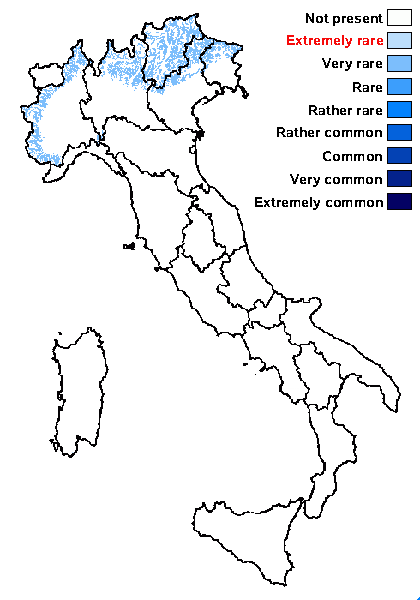
Predictive model
Herbarium samples

Source: Arup, U., Blom, H. H. & Lindblom, L. 2021. The Gaupne area in Sogn og Fjordane – a hot-spot for lichens in Norway. Graphis Scripta 33 (3): 31–49. Oslo. ISSN 2002-4495. - CC BY-4.0
Habit of Blastenia monticola, showing a rather poorly developed, grey thallus with small scattered
isidia-like outgrowths and apothecia typical of the genus with a ferruginous colour. Holien 10782 (TRH). Bar
= 1 mm
Growth form: Crustose
Substrata: bark
Photobiont: green algae other than Trentepohlia
Reproductive strategy: mainly asexual, by isidia, or isidia-like structures (e.g. schizidia)
Commonnes-rarity: (info)
Alpine belt: absent
Subalpine belt: very rare
Oromediterranean belt: absent
Montane belt: very rare
Submediterranean belt: absent
Padanian area: absent
Humid submediterranean belt: absent
Humid mediterranean belt: absent
Dry mediterranean belt: absent

Predictive model
| Herbarium samples |

 INDEX FUNGORUM
INDEX FUNGORUM
 GBIF
GBIF
 DOLICHENS
DOLICHENS
